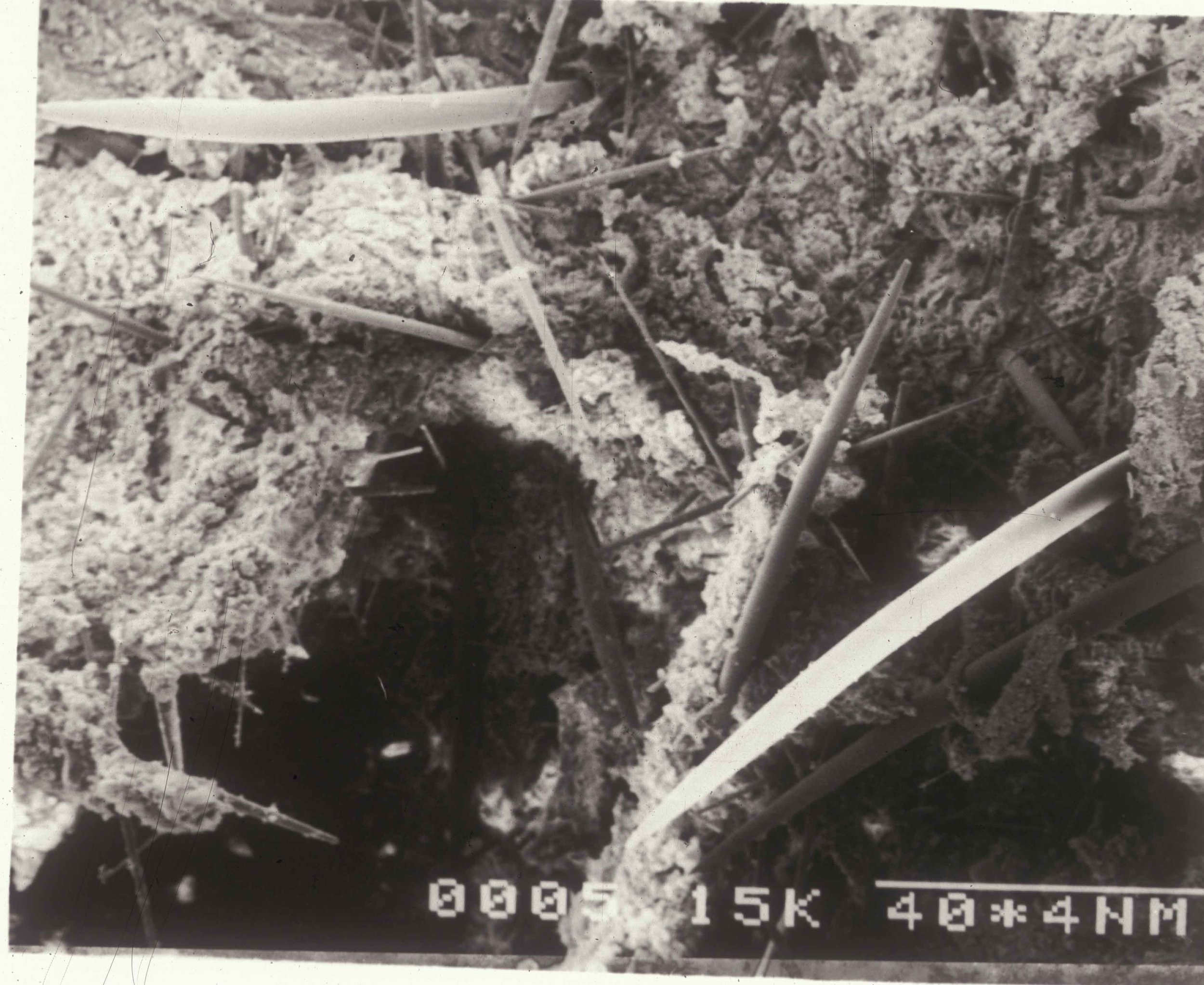The Hawksbill Turtle’s Distinctive Diet
This electron micrograph shows the intestinal epithelia of a hawksbill turtle with embedded sponge spicules. © Anne Meylan
By Anne Meylan and Scott Whiting
In strange company with a few species of fish and nudibranchs, the hawksbill turtle is one of very few animals that feeds principally on sponges. It is the largest vertebrate and only reptile to feed on this prey. Spongivory, or feeding on sponges, is rare, presumably because of the significant defenses of sponges, such as siliceous (glass) spicules, indigestible spongin fibers, and an array of chemical compounds.
In the Caribbean, hawksbills prey on only a few of more than 300 sponge species found in the region. The turtles feed primarily on sponges that lack spongin fibers, but many of these sponges do contain large amounts of glass spicules. Other items in the hawksbill’s Caribbean diet are algae, corallimorpharians (coral-like anemones), zooanthids, and tunicates, but in only a few cases have these items constituted a significant part of its diet.
Gut samples of hawksbills from numerous localities in the Indian and Pacific oceans have revealed sponges as the turtles’ predominant food item, suggesting that spongivory may be a worldwide feeding habit. Nonetheless, hawksbills in Australia’s Northern Territory consume significant amounts of marine algae, seagrasses, and mangrove fruits.
Possibly as a result of what they eat, hawksbills are occasionally toxic to humans. In scattered cases, consumption of hawksbill meat has been conclusively linked to mass poisoning events that killed or severely sickened scores of people. Blue-green algae that are symbiotic with sponges, as well as secondary compounds present in sponges, are among the suspected causes of the poisonings, but definitive evidence is lacking.
Young hawksbills appear to feed at the ocean’s surface on plants and animals associated with the drift community, including Sargassum algae, fish eggs, tunicates, and goose barnacles. Unfortunately, young turtles also frequently consume bits of plastic and tar balls that float on the surface.
Reproductive female hawksbills also deviate from the sponge-dominated diet, greatly reducing their overall intake of food and consuming calcium carbonate rubble, possibly as a source for calcium to shell their eggs.
Although they occupy a variety of habitats, hawksbills are most closely associated with coral reefs, where they play a key role in the ecosystem’s health. Using their sharp, hawk-like beaks to penetrate the sponges’ outer armor, they expose the soft internal parts to other sponge-eating animals. The turtle’s peculiar dietary habit also helps to keep sponge populations in check, freeing up space on the reefs for other organisms to settle and grow.
This article originally appeared in SWOT Report, vol. 3 (2008). Click here to download the entire article as a PDF.

